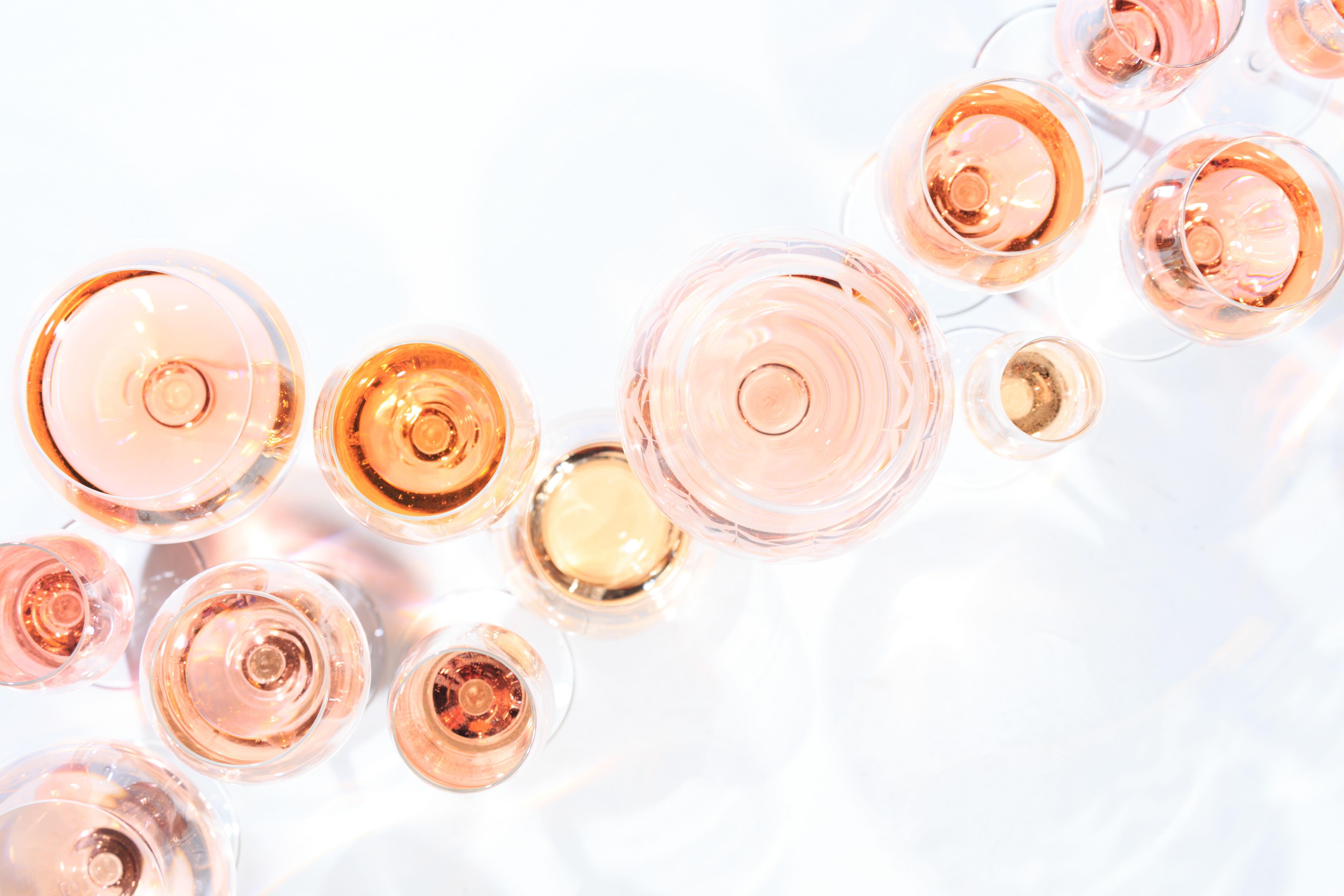It’s finally springtime and everything is rosy — well, at least the wine is. Somewhere among the free-flowing magnums and the Instagram hashtags, everyone started thinking (and drinking) pink. Originally a darling of the Provençal region of France, rosé can now be found in every wine shop across the country and from nearly every wine-growing region in the world. But is our unquenchable thirst leading to rosé’s demise?
“It’s easy to dismiss it as a fad, but rosé isn’t dying,” says Chris Foster, cofounder of Libation Project, which supplies wine from across the globe to some of the Twin Cities’ top shops and restaurants. “It gets bigger year after year, but at some point, it needs to be dialed back in. Otherwise rosé is at risk of becoming too commercial.”
Let’s begin with the basics: Rosé is not about terroir. Most producers pick the grapes early so that acidity is high and alcohol is low, then allow the wine just enough skin contact to get that perfect steely pink tint. So whether your wine is coming from France, Spain, Argentina or California, it’s likely to have many familiar characteristics.

Photography by Ekaterina Molchanova
Today, the majority of commercial rosés are designed to appeal to a mainstream palate: big and juicy with strawberry and watermelon aromatics and a crisp, dry finish. Don’t get me wrong; there’s a time and a place for such a wine, but these preferences don’t leave much room for experimentation. “The nuances between rosés are difficult to pull out,” Foster notes. “It’s not a wine that demands much thought.”
Our pink obsession has also led to an explosion of fad rosés from what Foster calls “virtual wineries.” These producers buy up grapes or juice in bulk, manipulate it with sugar, acid and coloring agents, then slap a clever label on the bottle. And guess what: It sells. It’s a craze of new wines being made according to a recipe, rather than being reflective of a grape, a person or a place. In other words, we find ourselves swimming in a sea of pink that’s not too dry, not too sweet, not too aromatic, not too dark — not too anything.
Such easy drinking doesn’t encourage much exploration, either. “Once most people find a bottle they like, they stick with it,” says Foster. “Last summer, one of our rosés sold as many bottles as the rest of the category combined.” As a result, it’s difficult for all these new labels to succeed, leaving winemakers and distributors trying to hit it big with the It bottle of the season.
Rosé used to be a wine that was here by Easter and gone by Thanksgiving, but now #roséallday has turned into #roséallyear. “This is not a wine that was meant to be a year-round category,” Foster explains. “Producers are rushing to get their new vintage on the shelves as soon as possible.” That can be as early as January, because if the goal is to be the hot new wine, it’s all about getting to the consumer first. Why does this matter? “Rosé really needs a few months in the bottle to assimilate,” he notes. “If not, we get a wine that tastes disjointed and unbalanced.”

Photography by 2nd Truth Photography
Three years ago, it seemed that rosé was only a passing infatuation. Yet here we are: It’s no longer just a wine — it’s a lifestyle. But is rosé on the verge of self-destruction? In a category that’s become so outrageously crowded, how can the average wine drinker differentiate the good from the bad? Well, when the sun is out and the wine is cold, maybe it doesn’t matter.
“People drinking rosé is a decidedly good thing,” Foster concludes. “It’s a refreshing style of wine that brings happiness to those who are enjoying it. Who could argue against that?”
5 Wines to Try Instead
Looking to expand your color spectrum? Consider chilled reds. Berry-tinted wines like a Grenache or a gamay are just as refreshing as a blush rosé when hit with a bit of chill, plus they have more nuance thanks to the extra skin contact. “Look for younger reds that are bright, juicy, and low in alcohol and tannins,” says Chris Foster. Not sure where to begin? Here are five bottles to get you started.
Le Coeur de la Reine Gamay (2017)
This French gamay from the Loire Valley is almost electric red in the glass. It’s made in such a way that vintners can extract the color and flavor sans tannin overload. The result? An exceptionally juicy vino with some spice, notes of strawberries and raspberries, and a very clean finish.
 Viña Maitia Aupa Pipeño (2017)
Viña Maitia Aupa Pipeño (2017)
This wine from Chile’s Maule Valley is fermented in neutral concrete, which allows the flavor of the grapes to come through. It’s fresh and lively but with soft, rounded edges.
 Weingut Niklas Schiava (2017)
Weingut Niklas Schiava (2017)
Known as trollinger in Germany, schiava is an Italian red similar to gamay. This bottle from Alto Adige tastes of red fruits, orange peel and subtle spices, plus it packs some punchy acidity.
 Luigi Giordano Langhe Rosso (2017)
Luigi Giordano Langhe Rosso (2017)
Fresh and juicy, this wine from the Piedmont region of Italy is made with nebbiolo (red) and arneis (white) grapes. Nebbiolo can be overly tannic and earthy when young, but this bottle is floral and fruity.
Cantina di Carpi Piazza Grande Spumante Rosato Brut Lambrusco
Not quite ready to give up the ghost? Consider this rare rosé lambrusco from Emilia-Romagna. Pale pink in the glass, it is crisp with frothy, persistent bubbles and just the right amount of fruit. There are hints of rose, hibiscus and fresh strawberries in every sip.




